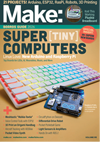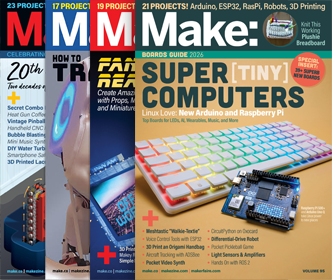While this dress by Abbey Liebman incorporating flexible photovoltaics for charging personal electronics is interesting, what really caught my eye was the fact that it uses an improved type of conductive thread based on a proprietary blend of polymers and nanoparticles.
You click on a link and buy some silver-based conductive thread right now, but over the course of years, the current silver-based threads will slowly oxidize in air and the conductivity will start to degrade. Presumably, the new material (from the Hinestroza research group at Cornell) does not.
About a year ago I was considering a tutorial for Make: Projects about making one’s own conductive thread using carbon nanotubes (CNTs). At the time, you could buy small samples of CNTs from several places around the web at “educator’s” prices. Research on CNT-based conductive inks has shown that carbon nanotubes dispersed in water bond strongly enough to cellulose in paper to resist washing and prolonged mechanical wear, and would also, presumably, show similar performance on cotton thread. So I’m pretty sure you could make durable conductive thread just by soaking regular cotton thread in a dispersion of CNTs in water. Unfortunately, more research has shown, pretty conclusively, that carbon nanotubes are bad for you. Which is probably why the supply of those accessible “educator” samples seem to have dried up. Oh well.








